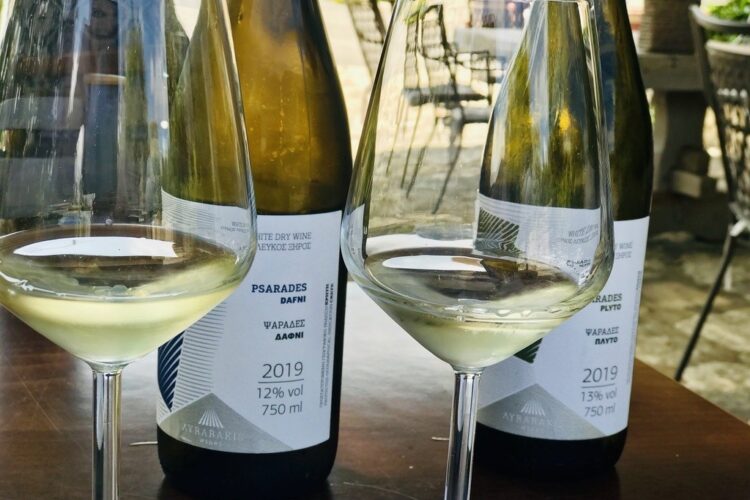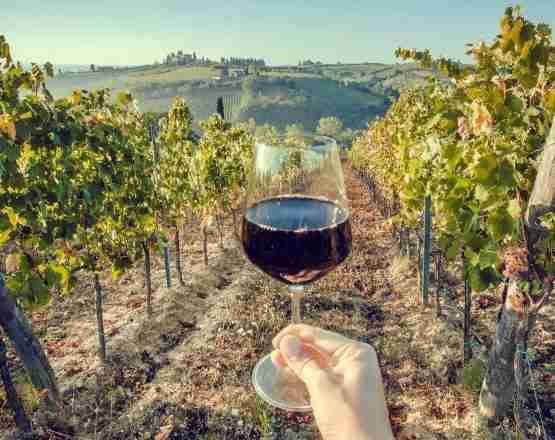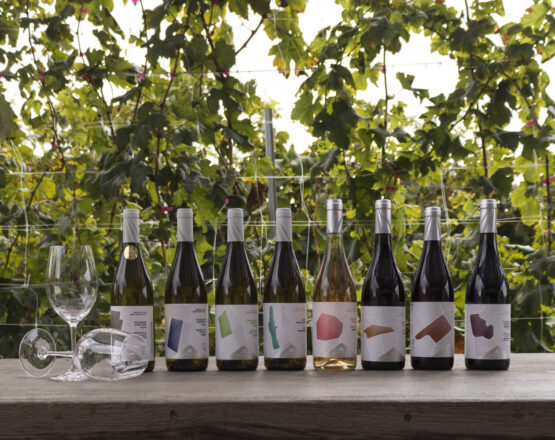Wine

The name of the god Dionysus, he of the vine and grape, is found in a couple of Linear B tablets: one from Pylos and the other Kydonia/Chania, dating to late in the Bronze Age, to the 13 century BC. His subsequent rumbustious career as an Olympian in Greece and then Rome is well known, although a closer look at his myths reveal a more complex character that became somewhat overlain: a god of resurrection, a god who acknowledged the existence and importance of the emotional, the passionate and the illogical aspects in humanity. A foil to Apollo’s aloof and cold intellectuality. Dionysus might have become silenced in the years of Christianity in Greece today, but we have the saint from Cappadocia worshipped in Southern Greece, Crete and Cyprus, namely Saint Triphonas to remind us of how old traditions as often mutated as died out. And some of the Dionysiac symbolism finds echoes in Christianity: I am the true Vine, and this is my blood.
The name Dionysus Skylitas is associated with the type of grape-vine Skylis. And the present village of Skyllous in the Heraklion province is situated in one of the most important vinicultural districts of Crete. Echoes still may be faintly discerned.
The Vitis Vinifera that is cultivated today derives from the wild Vitis vinifera sylvestnis. Grapes have been utilised in Greece as far back as the Upper Palaeolithic (Hansen 1991) and in Crete as far back as 5000 BC (Botema 1980). The oldest representations in Europe concerning the grape (in a cluster), if not wine, are seen in Thera, painted around 1700 BC on clay jars.
Of course, one must be careful here: the grape that is eaten does not need to mean that it was also pressed to make wine. There is in fact a lack of archaeological evidence concerning processing facilities for many millennia. Nor do we know exactly how the grape appears first in Crete .. native or introduced with the first farmers? The grape is certainly about in Neolithic Knossos though (pre-3500 BC).
In the millennium of slow growth in Crete (3000-2000 BC) before the Palaces emerged, it is felt that wine had become a staple. Finds from Myrtos, on the south coast, at around 2,500 BC offer some of the earliest hints of this. Henceforth, there are available many suitable storage vessels, large and small; also pitchers for the table, pouring jugs and always a large range of drinking vessels, simple and ornate alike.
The larger scale of production and control initiated by the palatial style of life saw the introduction the length and breadth of the island of wine presses, installations at times permanently set up in the large rural villas. The bureaucratic Linear B tablets speak of it as well: measured in volume by standards developed for wet goods, stored and doled out as rations and gifts. Modern analytical programmes looking at the contents held in the clay vessels have detected the by-products of its presence – century after century. Indeed, the very first retsina was produced in Bronze-Age Crete (Aegean): pine resin may originally have been used to seal vessels, and stop the contents turning vinegary (the resin kills bacteria). It is even possible that wines were in a simple fashion distilled – to make a rather rough and ready spirit.
A little after the Bronze Age, wine/grapes, olive oil, bread and meat constituted the basic components of the Homeric banquets one reads about so often. And of course wine and grapes have featured for millennia as part of the 3 (or 4) main components of the famed Mediterranean Diet.
The resin is added to the grape must in the first days of fermentation. But the ancients also mixed their wine with water to consume it (1 measure of wine, to 2 of water – was considered a civilized ratio). Sometimes even sea-water (!) was employed. But why? It is possible that it was a heavily alcoholic drink, and almost certainly odd-tasting to our tongues. Cutting it with water would make it less strong in taste and in its effects on the body. In its undiluted form wine was akratos. The term is also used for the water of the Nile, which the ancient Egyptians purported to prefer as it was not polluted by Dionysiac products. Beer, however, was for long their favourite tipple.
Crete today is the one of the most important vinicultural districts of Greece. Its tradition of wine making goes back for many, many centuries, as its particular soil conditions and geographic/climatic situation make this island perfect for the vine. In the Middle Ages, under the Venetians, ships from all over Europe crowded the ports of Crete to ship out the much appreciated malmsey wine: the very stuff the unfortunate Duke of Clarence met his end in. Production fell away under the Ottomans .. who nonetheless were not adverse to a glass or three. Production then remained more at the level of the household: with the (in)famous Cretan ‘brown’ the near-universal output (like an immature sherry). Nonetheless many local grape varieties survived: to be carefully nurtured back to life in the last decades, and now often blended with more famed non-Cretan grape-types. Crete took a long time to recover after the Phylloxera epidemic of 1976. But, fully modernized in its production techniques, today its wines have a firm place in the oinophile’s world – justly famed as they were five centuries ago, and possible four millennia too!


